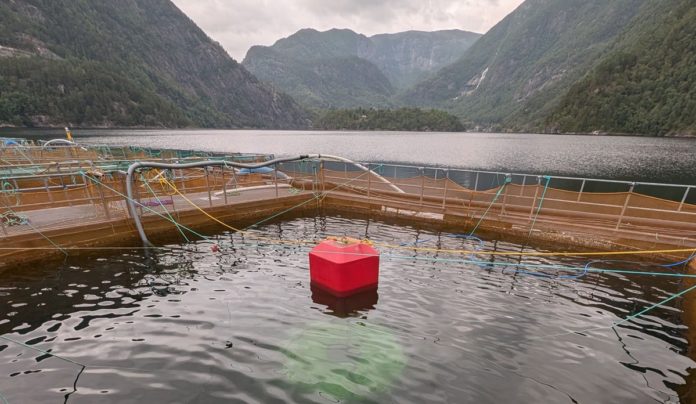Environmental conditions crucial for submersible fish cages, study finds
A recent study from the Institute of Marine Research (Havforskningsinstituttet) has underscored the importance of local environmental conditions for the successful use of submersible fish cages in salmon farming.
Conducted in collaboration with Deakin University in Melbourne, the study shows that salmon can perform as well in submerged cages as in traditional surface cages, but only if the underwater environment is favorable.
The research team, led by marine scientist Frode Oppedal, compared the growth and health of fish in submersible cages with those in surface cages. While early trials showed a reduction in sea lice infestations, the fish in submerged cages experienced slower growth and a higher incidence of bacterial infections such as winter sores. This prompted the researchers to investigate the influence of varying environmental conditions at depth.
“We see clearly that it is very important that the environment in the depths is suitable for the fish. Otherwise, farmers risk problems with welfare and disease just as much as in surface cages,” said Frode Oppedal, marine scientist at the Institute of Marine Research.
Initial results led to further investigation
In the early trials, fish in submersible cages showed reduced sea lice levels, but they struggled with growth and were more affected by diseases like winter sores. In contrast, fish in surface cages performed better, raising questions about the underlying causes of the disparity.
“The fish in the submerged cages had significantly reduced lice but poorer growth and were attacked by the bacteria that cause winter sores,” Oppedal explained. “Meanwhile, the fish in surface cages managed fine and didn’t experience as many issues with winter sores.”
These findings led the team to consider whether environmental conditions, rather than the submersion itself, were the primary factor affecting the health and growth of the fish. Oppedal noted, “We began to look at what the difference was between the two fish groups. The main difference was that one cage was submerged, but earlier trials had shown that submersion alone shouldn’t have such a large effect.”
Environmental conditions make the difference
To better understand the role of environmental conditions, the researchers conducted a second trial using six cages—three submerged and three surface cages—placed side by side to ensure identical environmental conditions. The submersible cages were placed at a depth of one meter, while the surface cages remained at the top.
“If the theory that the environment was what negatively impacted the fish in the first trial was correct, then the fish in these two groups should develop in the same way,” Oppedal said.
The trial lasted 11 months, covering the entire production cycle from smolt to harvest-ready fish. The results confirmed the team’s hypothesis: “The results showed no difference between the two groups when it came to growth, welfare, and behavior,” Oppedal stated. This confirmed that the differences in the earlier trial were due to the environmental conditions, not the use of submersible cages themselves.
Managing the Submersible Environment
The study highlights the importance of monitoring key environmental factors, such as oxygen levels and temperature, when using submersible cages. Oppedal emphasized that farmers must continuously measure the underwater environment to ensure it remains suitable for fish.
“We’ve already developed an app that farmers can use to determine which measures against sea lice are best for different sites. Moving forward, we will also include a feature to model whether a location is suitable for submersible cages,” said Oppedal.
Looking Ahead
The findings suggest that submersible cages offer promise as a tool to reduce sea lice infestations but must be used with careful monitoring of environmental conditions. Oppedal and his team are now exploring the possibility of adjusting the depth of submersible cages in response to seasonal changes in water conditions, such as temperature and oxygen levels.
“We are just at the start of a new project. We want to see if it could be better for the fish if the cages are moved up and down in the water column depending on how factors like oxygen and temperature change throughout the year,” Oppedal said.
The study was part of the Dypdom innovation project, funded by the Research Council of Norway and industry partners Sinkaberg-Hansen and AKVA.


